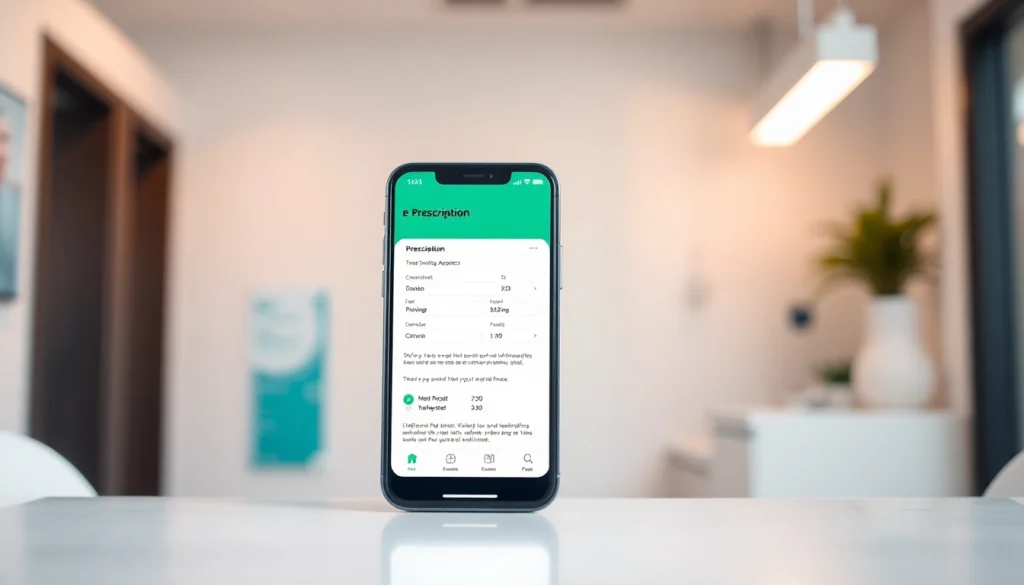Top E-Prescription Apps for Android: Streamline Your Prescribing Process

Understanding E-Prescription Apps for Android
E-prescription apps have revolutionized the way healthcare providers manage prescriptions. These digital tools streamline the prescribing process, enhance communication with pharmacies, and facilitate better patient outcomes. As mobile technology evolves, the demand for eprescription apps for android is surging, offering new capabilities and efficiencies for healthcare professionals. This article dives deep into the world of e-prescription apps available on Android, exploring their functionalities, advantages, and the future landscape of digital prescribing.
What Are E-Prescription Apps?
E-prescription apps are digital platforms that empower healthcare providers to generate and send prescriptions electronically. These applications replace traditional paper scripts and reduce the administrative burden on healthcare providers. With the ability to prescribe medications, review patient medication histories, and manage refill requests from a mobile device, these apps enhance the overall workflow within a clinical setting.
Benefits of Using E-Prescription Apps
- Increased Efficiency: E-prescribing significantly speeds up the prescription process, allowing quick access to patient medication records.
- Enhanced Accuracy: Digital prescriptions minimize errors typically associated with handwritten scripts, such as misread medications or dosages.
- Improved Patient Safety: Tracking drug interactions and allergies becomes more manageable with integrated electronic systems, promoting patient safety.
- Cost Savings: E-prescription reduces the costs associated with paper, printing, and mailing prescriptions.
- Convenience: Patients enjoy greater flexibility in filling prescriptions and managing their medication needs through timely notifications and refill reminders.
How E-Prescription Apps Improve Patient Care
The ultimate goal of e-prescription apps is to enhance patient care. These applications provide healthcare professionals with comprehensive tools to monitor patient medications, generate alerts for possible drug interactions, and ensure patients adhere to prescribed treatments. Moreover, real-time access to a patient’s medication history allows providers to make informed decisions, ultimately leading to better health outcomes.
Key Features to Look For in E-Prescription Apps for Android
User-Friendly Interface
A user-friendly interface is crucial for busy healthcare professionals. E-prescription apps must be intuitive, allowing users to navigate functions quickly without extensive training. A well-designed interface enhances user satisfaction and reduces the likelihood of costly errors, making the prescribing process smoother.
Integration with Medical Systems
For an e-prescription app to be effective, it needs to integrate seamlessly with existing electronic health record (EHR) systems. This interoperability allows healthcare providers to access patient data and manage prescriptions in one centralized location, fostering efficiency and accurate patient care.
Security and Compliance Standards
Security is paramount in healthcare, as patient data is sensitive and regulated. E-prescription apps must comply with HIPAA and other relevant laws to ensure that patient information is protected. Features such as two-factor authentication, data encryption, and secure cloud storage are vital for maintaining data integrity and confidentiality.
Comparison of the Most Popular E-Prescription Apps for Android
Key Competitors in the Market
The e-prescription app market offers a range of solutions tailored to different needs. Applications are often distinguished by their features, usability, and integration capabilities. It is essential for healthcare providers to evaluate their options based on clinical requirements and user experience.
User Ratings and Reviews
Prospective users should consider user reviews and ratings as a valuable resource when selecting an e-prescription app. Feedback from fellow healthcare providers can shed light on the app’s reliability, ease of use, and overall performance in real-world scenarios. Engaging with online communities and forums can also provide insights into user experiences.
Pricing Plans and Accessibility
When analyzing e-prescription apps, pricing is a critical factor. Different apps may offer various subscription models, including monthly fees, per-prescription costs, or one-time purchases. Providers should carefully assess their budget and expected usage to find a pricing plan that aligns with their financial constraints and operational needs.
Best Practices for Implementing E-Prescription Apps in Your Practice
Training Staff and Facilitating Adoption
Implementing a new e-prescribing system requires comprehensive training for all staff. Creating training sessions, workshops, and instructional materials can help facilitate a smooth transition. Encourage feedback during the learning process to identify areas where users may struggle and refine the approach accordingly.
Monitoring Usage and Effectiveness
After implementing an e-prescription app, ongoing monitoring is essential. Tracking usage patterns, prescription errors, and patient adherence can provide valuable insights into the effectiveness of the system. Leveraging analytics and reports helps healthcare providers make data-driven decisions about future adjustments or training needs.
Staying Updated with Technological Advances
The field of healthcare technology is constantly evolving. Practitioners should keep abreast of the latest developments in e-prescribing and mobile health technologies. Participating in webinars, attending industry conferences, and subscribing to relevant publications can help ensure your practice remains current and competitive.
Future Trends in E-Prescription Apps for Android
Emerging Technologies in E-Prescribing
As technologies advance, e-prescription apps are likely to incorporate features such as artificial intelligence (AI), machine learning, and telehealth integrations. These innovations will enhance predictive analytics capabilities, enabling providers to offer personalized care plans based on a patient’s unique preferences and health history.
Impact of Telemedicine on E-Prescribing
The rise of telemedicine has been transformative for healthcare delivery, and together with e-prescribing, it promises even greater convenience for both providers and patients. As telehealth services expand, the integration of e-prescribing with virtual consultations will facilitate seamless prescription management, catering to the growing demand for remote healthcare services.
Predictions for E-Prescription Adoption Rates
Adoption rates for e-prescription apps are expected to rise significantly as healthcare systems become increasingly digitized. As more providers recognize the advantages of digital tools, the transition from traditional methods will accelerate. Factors such as patient demand for convenience, regulatory initiatives, and the ongoing push towards value-based care will further drive adoption rates in the coming years.







